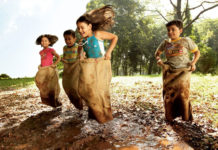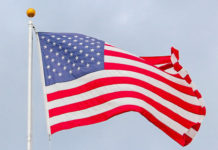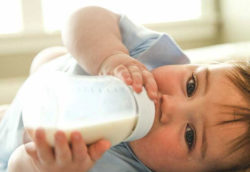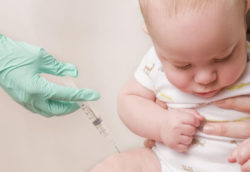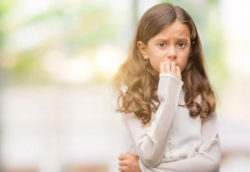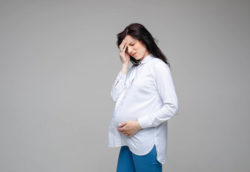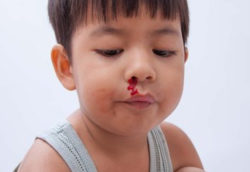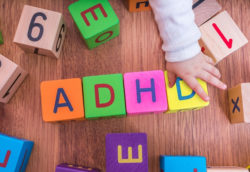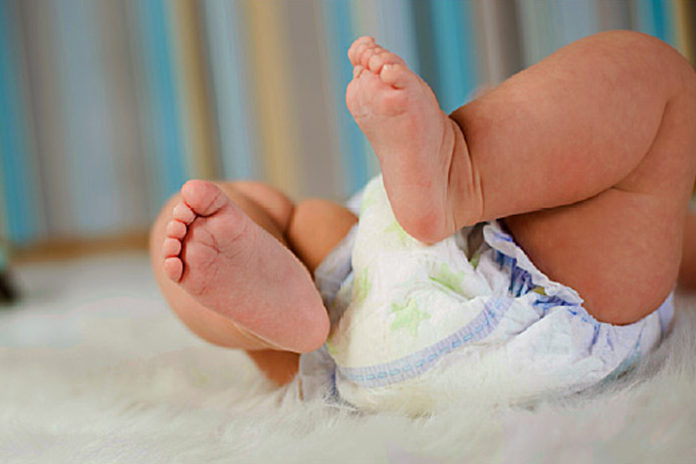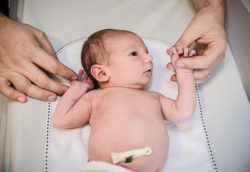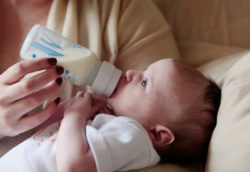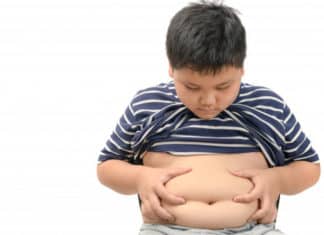Frequent use of diapers may make your little one to be affected by rashes at some point. The diaper rashes are more common that makes your little one more uncomfortable. You should be well equipped to tackle the diaper rashes of your baby.
You baby spends around 2-3 years wearing diapers. Frequent use of nappies may make your baby’s diaper area wet, itchy and more prone to infections.
This article discusses the causes and symptoms of diaper rashes in babies. It presents the home remedies and tips to get rid of diaper rashes in babies.
What are Diaper Rashes in Babies?
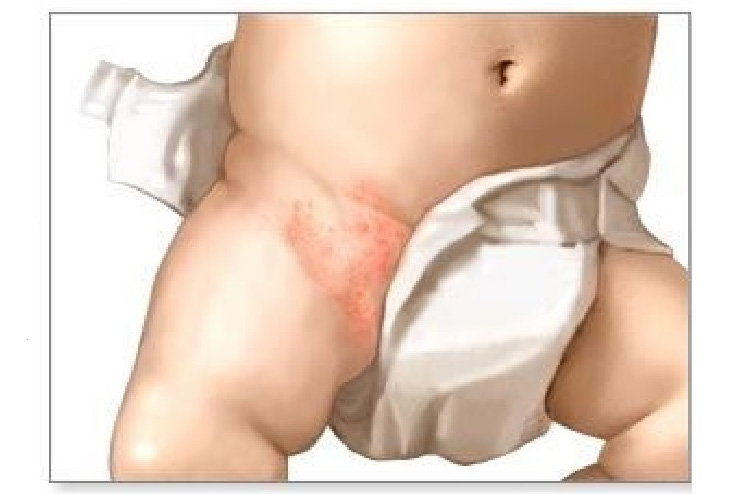
Medically diaper rash is termed as skin dermatitis. Diaper rashes are itchy, small red patches that occur in your baby’s diaper area due to frequent contact of the urine and stools in the diaper with the skin.
Types of Diaper Rashes on Babies:
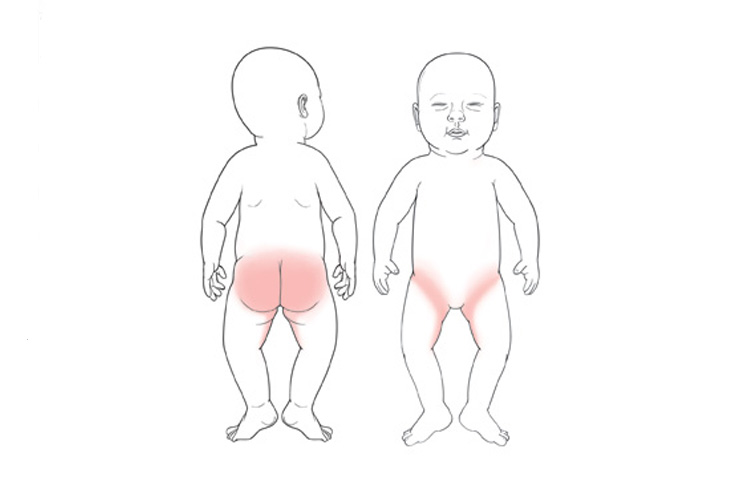
There are different types of diaper rashes including:
Bacterial Dermatitis: It is mostly caused by the group A Streptococcus and Staphylococcus aureus bacteria. It creates the bright red rash around the anus. This infection may go worse if untreated.
Allergic Dermatitis: This condition occurs when tour baby is irritated by the diapers, wipes. The repeated exposure to these irritants may create rashes.
Irritant Dermatitis: Your baby’s skin under the diaper is always sweaty. The tight diaper may not allow the sweat to dry and makes it furthermore wet with the frequent urination and stools. This condition creates red shiny rashes.
Chafing: Redness with small woozy bumps where the friction is more.
Yeast Infection: It is a bright red colored rash that occurs in the ridge between abdomen and thighs and spreads all over from there.
Cradle Cap: It is a red rash with yellow scales. It starts in the baby’s head and may occur in the diaper area.
Eczema: It is a dry, red scaly rash which causes itching
Impetigo: It is a secondary bacterial infection caused by the oozy crusts with yellowish fluid. It is a contagious rash.
Intertrigo: It forms small red areas with bumps filled with white or yellowish gunk.
Heat Rash: This type of rash is accompanied by tiny rashes. You can observe this in the creases of the diaper area.
Seborrheic Dermatitis: It may impact the other parts of the body like scalp, face, and neck along with the diaper area.
Eczema: It may look like a normal diaper rash at first. Sometimes it may turn purple and crusty with blisters.
Psoriasis: It is hard to distinguish between Eczema and Psoriasis in babies. It often resemble like a diaper rash or yeast infection.
Babies between 9-12 months of age are more vulnerable to diaper rashes.
What Causes Diaper rash in Babies:
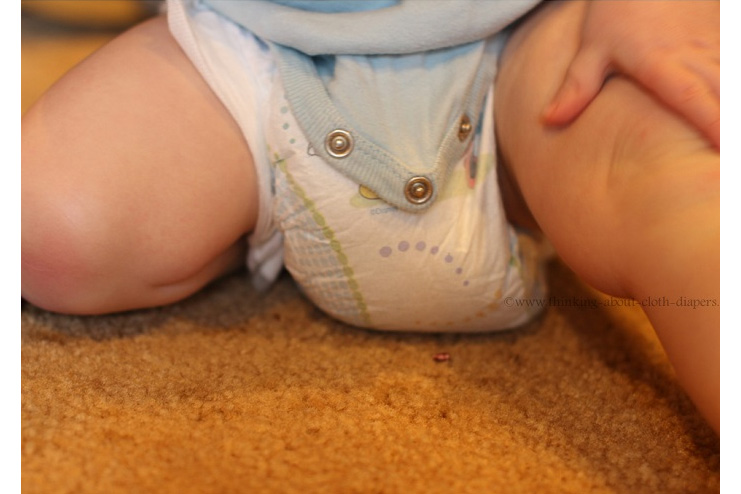
Here are the few causes of diaper rashes:
- Leaving the wet diaper for longer time
- Allergic reaction to diaper, disposable wipes or bath products
- Rapid diaper friction which can be worsen by the rapid scrubbing
- Interaction of the skin with irritants in the diaper like urine, stools
- Diarrhea makes the existing diaper rash worse.
- Some of the antibiotics given to the baby or the breastfeeding mom
- Cloth nappies
- Bacterial infections
- Sensitive skin
Symptoms of Diaper Rash in Babies:
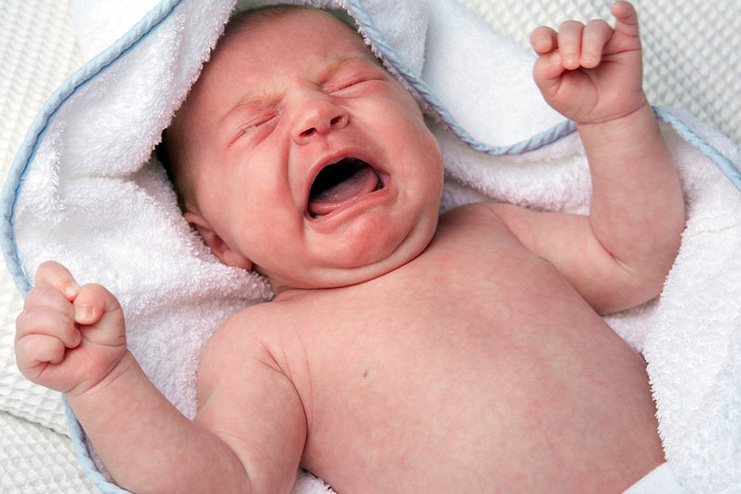
Diaper rash is featured by the following conditions:
Skin Signs: Diaper region is marked by the red, tender looking skin. You may notice the peeling of the skin near or around the diaper area.
Changes in Baby’s Mood: Your baby seems more uncomfortable especially during the diaper change, when your touch the diaper area while taking the baby into the lap or during bath.
When to See the Pediatrician for Diaper Rashes:
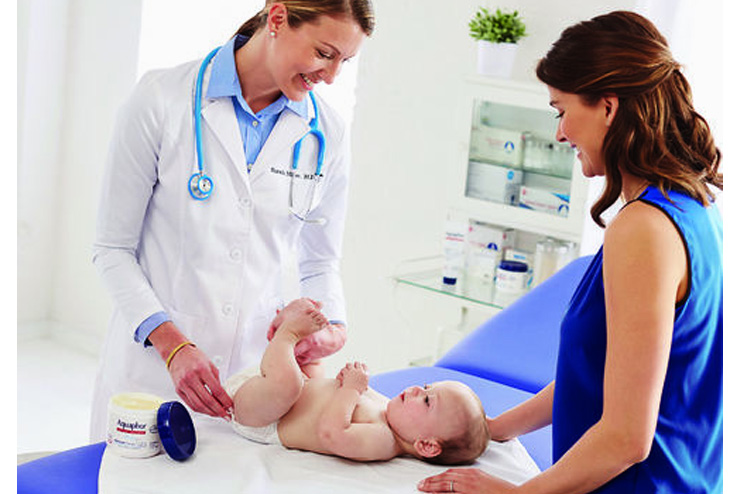
Appetite and sleep are not only the reasons for the baby to cry. Your baby may cry during the times of discomfort. Identify the causes of discomfort and soothe them at the initial stages to avoid complications.
Here are a few scenarios where you should visit the doctor for diaper rashes in babies:
- Blisters in the diaper area making it too rough
- Rashes accompanied by fever
- Swelling of the diaper area
- Swelling or pus that discharges from the blisters in the diaper area
- Rashes don’t go away even after the use of ointments
- Rashes spread all over the body
- Diaper rashes accompanied by pain and itch
How to Prevent Diaper Rash in Babies?
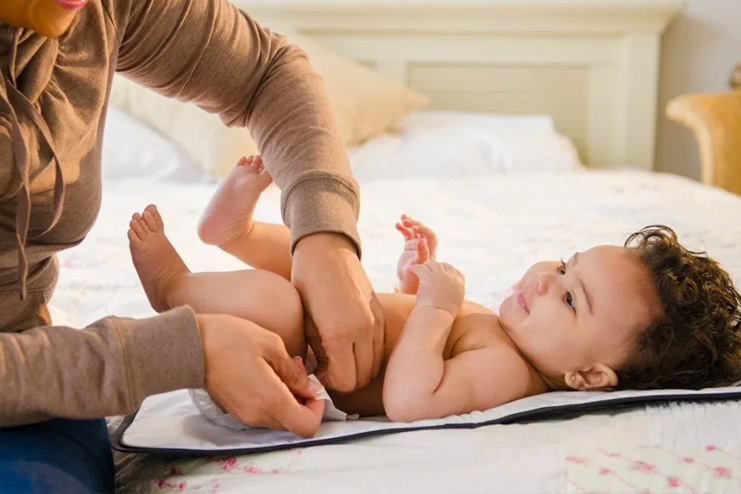
Use the following treatments and home remedies for diaper rash in babies:
1. Change the diapers often:
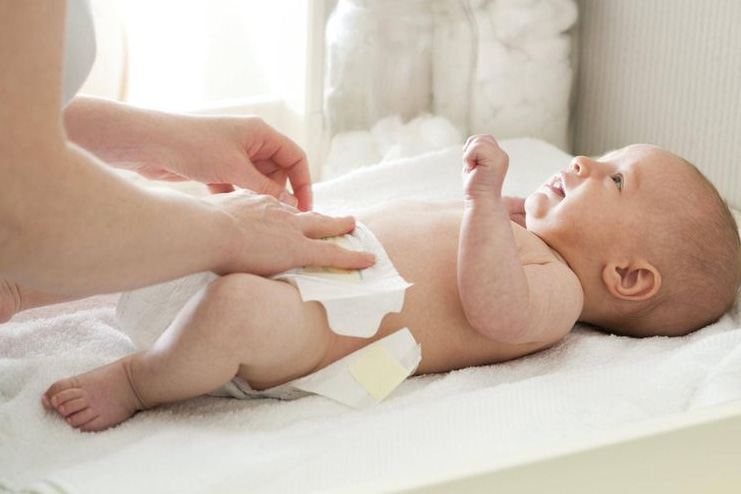
When your baby has diaper rash check and change the diaper frequently. Leaving the diaper for longer time may make the areas more wet and may make the rashes worse
2. Try changing diaper brands:
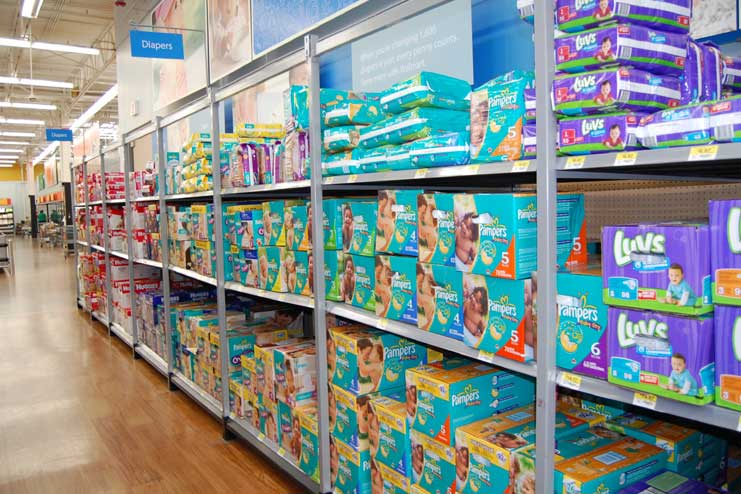
Diaper rashes sometimes occur due to the irritation caused by disposable diapers, wipes, and soaps. Using the same diapers may further increase the triggers. If you use cloth diapers, the type of detergent may also responsible for the infection sometimes.
Consult your pediatrician for the safe baby products.
3. Ensure Diaper Free time:
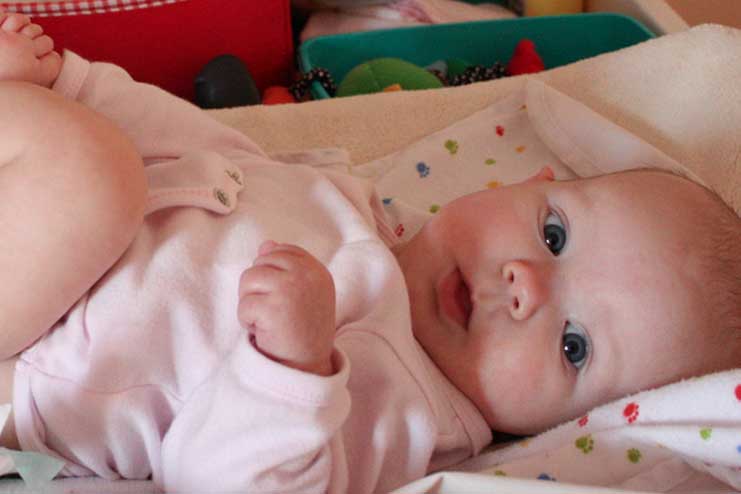
One of the main reasons for the diaper rash is improper ventilation near the diaper area. Give your baby some diaper free time between diaper changes.
4. Try Diaper Creams and ointments:
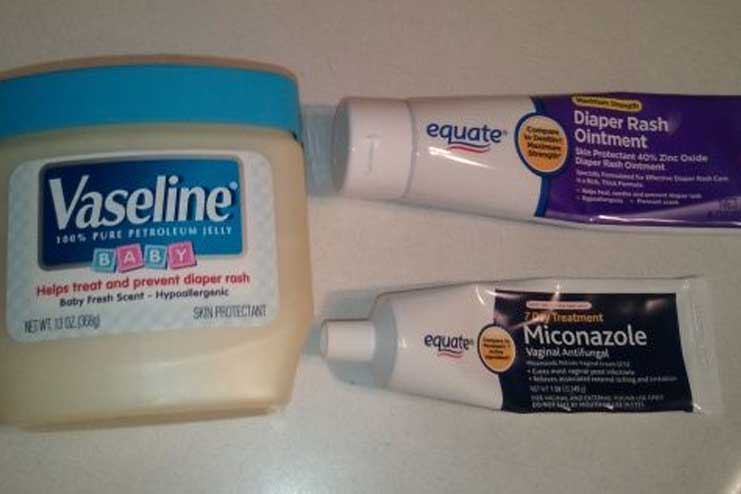
Use kids friendly diaper rash creams and soothing creams. Make sure that the cream you use should contain zinc oxide. Allow a thick layer of these creams and allow it to dry before putting the diaper.
5. Avoid Using Baby Wipes:
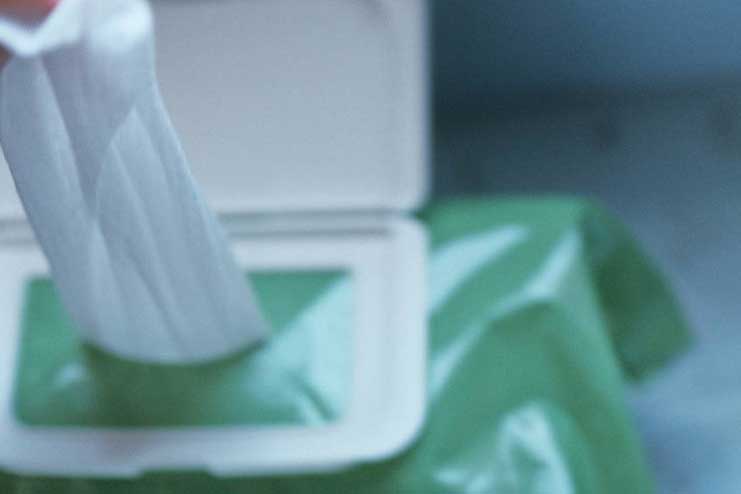
It is very essential to keep the baby’s diaper area dry. Clean your baby’s diaper area with scent free soap between the diaper changes.
If it is necessary to use the wipes, then it is highly recommended to use alcohol free and mild scented wipes.
6. Use Unscented Soaps and Detergents:
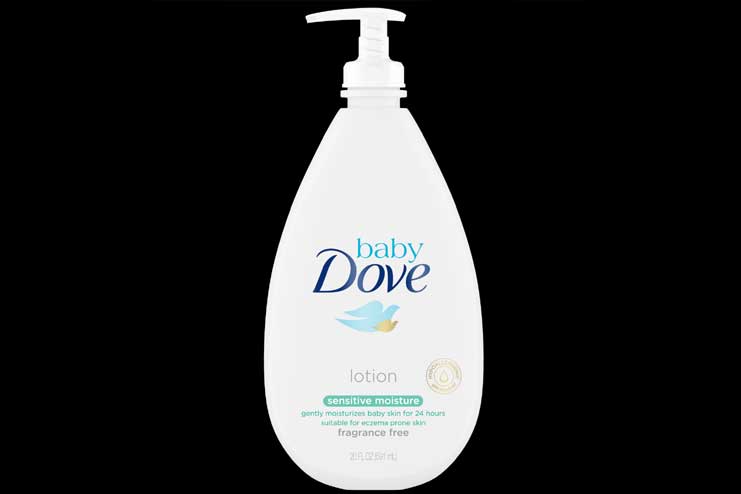
Scents in the soaps and detergents may be the skin irritants and cause diaper rashes. Most common causes of diaper rashes include laundry detergents, baby soaps, and creams.
7. Avoid new foods:
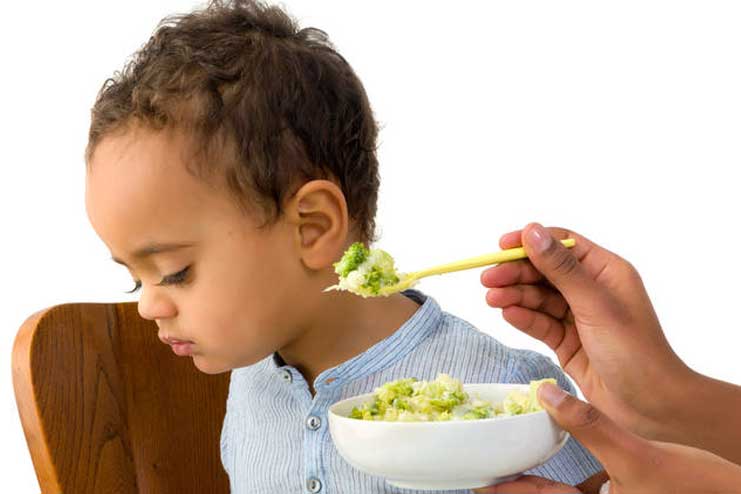
Avoid introducing citrus fruits and tomatoes which may cause your baby’s urine acidic and irritating.
Try introducing these foods in small quantities and monitor the baby for any rash development. If your baby develops rashes, it is better to avoid them till the rashes get healed.
8. Avoid Scrubbing the area:
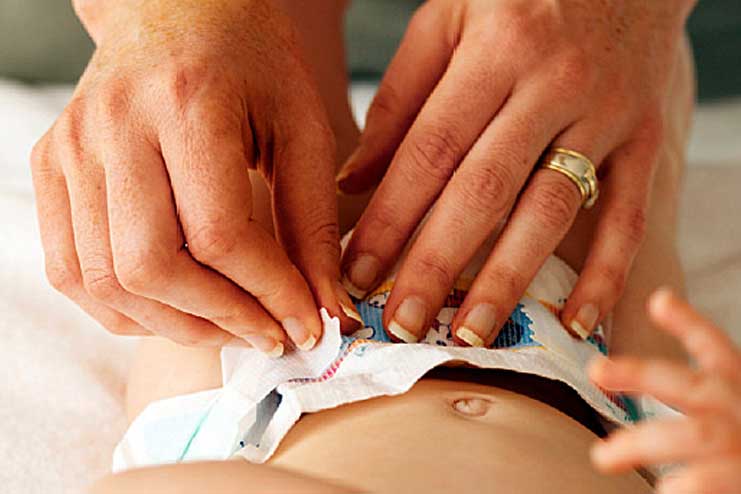
Most of the babies rub against their diaper with hands. They tend to rub against the diaper area more if they have rashes. Frequent rubbing may further irritate the rash and damage sensitive skin.
Deviate baby by giving pacifiers and small toys.
9. Keep your baby’s diapers clean:
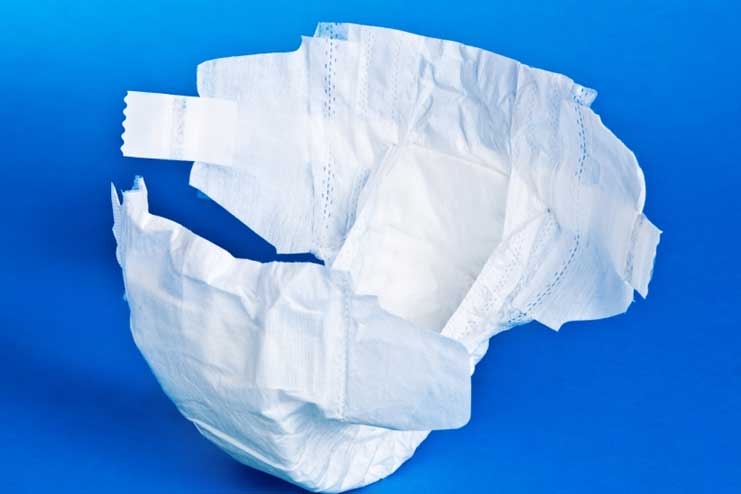
Moisture is the root cause of the rashes. Make sure you pat dry your baby’s diaper area before wearing a diaper.
10. Be careful while using cloth diapers:
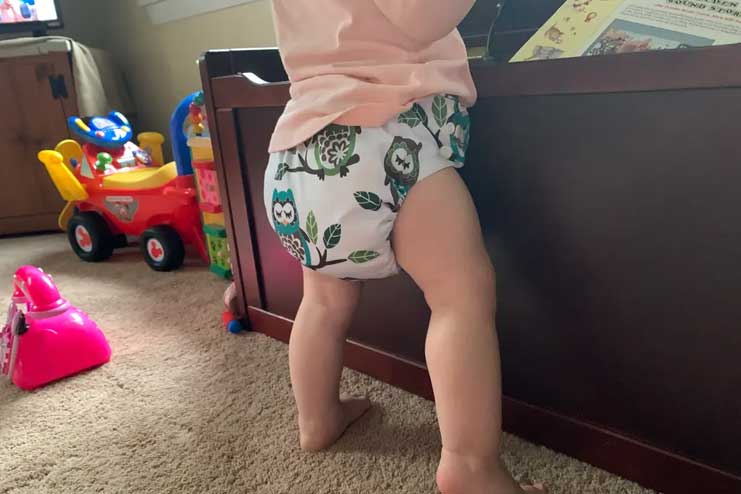
Cloth diapers are environment friendly. They can hold bacteria if not washed properly further making the rashes more severe.
Rinse the cloth diapers in warm water before washing. Make sure to avoid the deposits of detergent on the diapers. Ensure that the cloth diapers are completely dry before use.
11. Coconut oil:
 Coconut oil is well known for its antibacterial and antifungal properties. Wash your baby’s diaper area with warm water and wet it with the dry towel.
Coconut oil is well known for its antibacterial and antifungal properties. Wash your baby’s diaper area with warm water and wet it with the dry towel.
Take a few drops of coconut oil and apply it over the affected areas will help in relieving the discomfort. Coconut is nature’s best medicine and does not have any side effects. You can use it as many times as you can for better results. It worked well for my 6 months baby.
12. Breastmilk:
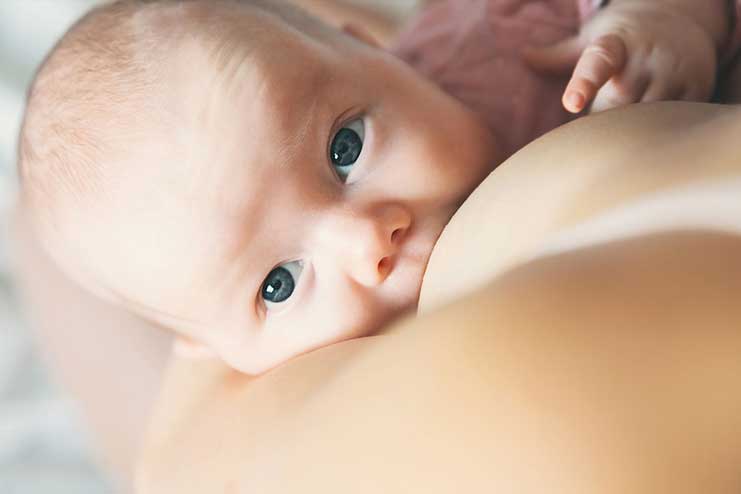
Lauric acid, a component of breast milk has anti bacterial and anti acne properties and works effectively to treat diaper rashes in babies.
Gently apply few drops of breast milk over the affected area and allow it to dry. For better results use fresh diaper every time you use this remedy.
13. Baking Soda:
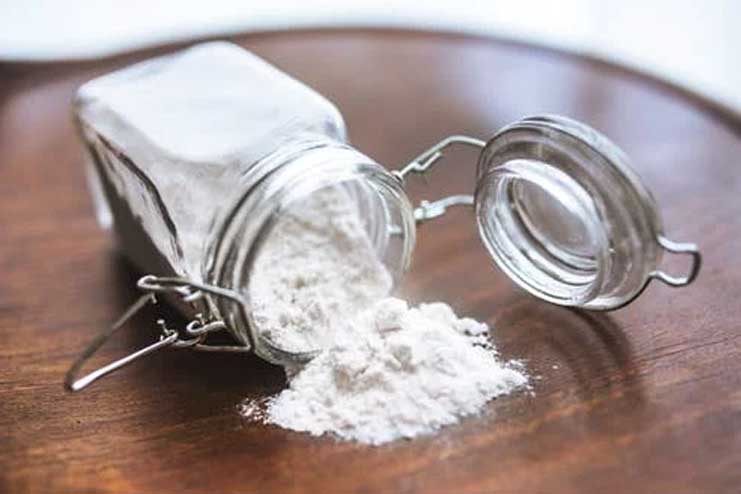 It has anti bacterial and anti inflammatory properties. It helps in balancing the pH levels and eliminating the bacteria from the skin.
It has anti bacterial and anti inflammatory properties. It helps in balancing the pH levels and eliminating the bacteria from the skin.
Mix two tablespoons of bacteria in warm water and wash your baby’s diaper area with this solution.
14. Aloe vera:

It has antioxidant and antibacterial properties. It accelerates the process of healing.
Take a little amount of fresh aloe vera gel and apply it over your baby’s diaper area.
15. Grapefruit Seed Extract:
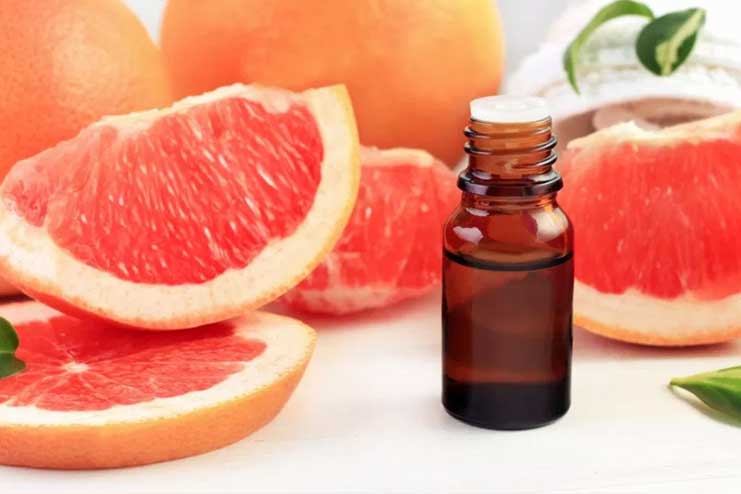
Grapefruit is rich in antioxidant beta carotene. It helps in hydrating the dull skin.
Clean your baby’s diaper area and add a few drops of grapefruit seed extract to a bowl of water and spray it over your baby’s affected area.
16. Cranberry Juice:

Cranberries fight against the free radicals that cause wrinkles.
Feed your baby 2-3 tablespoons of cranberry juice daily. Your baby’s diaper rashes may be the result of high alkaline content in the urine. Cranberry juice reduces tje alkaline levels in the urine by balancing the pH levels.
17. Epsom Salt:
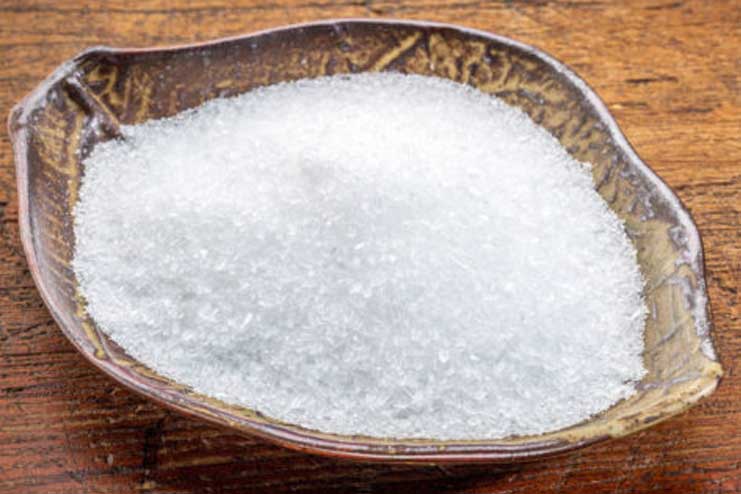
Epsom salt has the ability to soften the rough and dry skin. It also soothes the skin affected by the conditions like Eczema and Psoriasis.
Mix a cup of Epsom salt in the bath water and allow your baby to soak in it for 10-15 minutes. This helps in soothing the affected area.
18. Yogurt:

It helps in soothing the inflammatory and itchy areas.
Apply a thick layer of yogurt over the diaper rashes and wash it off after allowing it to dry for a few minutes.
19. Oatmeal:
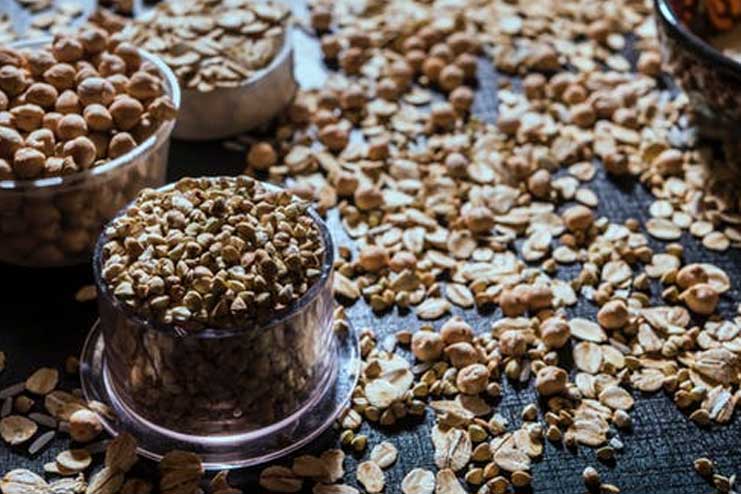 It has rich antioxidant properties and helps to recover the damage caused to the skin.
It has rich antioxidant properties and helps to recover the damage caused to the skin.
Mix 1 tablespoon of oatmeal to your baby’s bath tub and allow the baby to soak in it for 10-15 minutes. If your baby has severe rashes try using this remedy twice a day.
20. Apple Cider Vinegar:

It increases the blood flow of the skin and helps in balancing the pH levels of the skin. Apple cider vinegar is a natural disinfectant and rich in antibacterial, antifungal, and antiviral properties.
Add 1 teaspoon of apple cider vinegar to a cup of warm water and apply it over your baby’s skin with a cotton ball.
21. Tea Tree Oil:
It has anti inflammatory and anti bacterial properties. It calms redness, swelling, and inflammation.
Mix 2-3 drops of tea tree oil with coconut oil and apply it over the affected area and massage gently.
22. Frankincense Essential Oil:
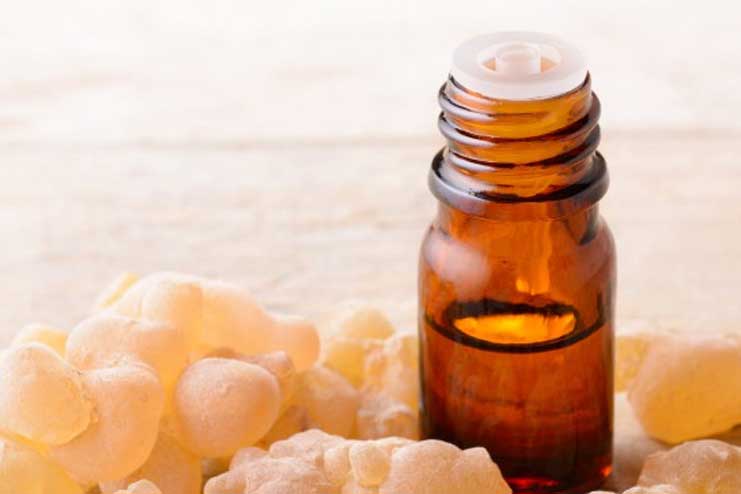
It has anti inflammatory properties and defends against the bacteria.
Mix 2-3 drops of frankincense essential oil with 1 tablespoon of coconut oil and massage it gently over the affected area.
23. Petroleum Jelly:
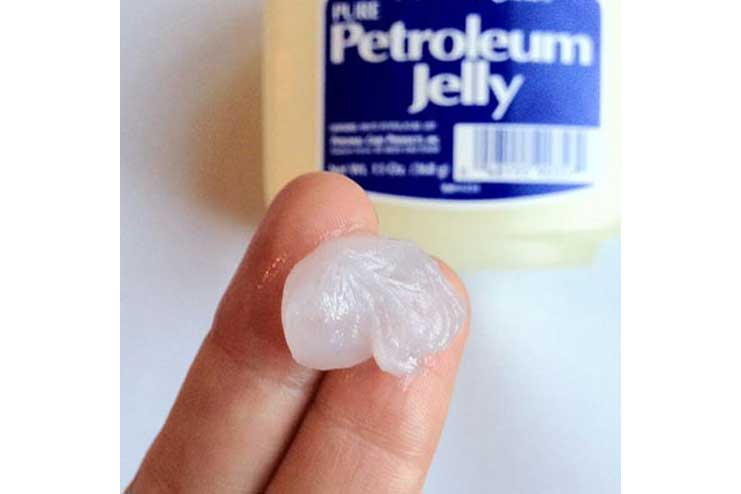
It is effective in preventing diaper rash. It has anti inflammatory and healing properties.
Apply your baby’s diaper area with warm water and pat it dry. Apply a thick layer of petroleum jelly over the affected area. Do this twice a day. It restricts the entry of other microbes into your baby’s body.
24. Shea Butter:
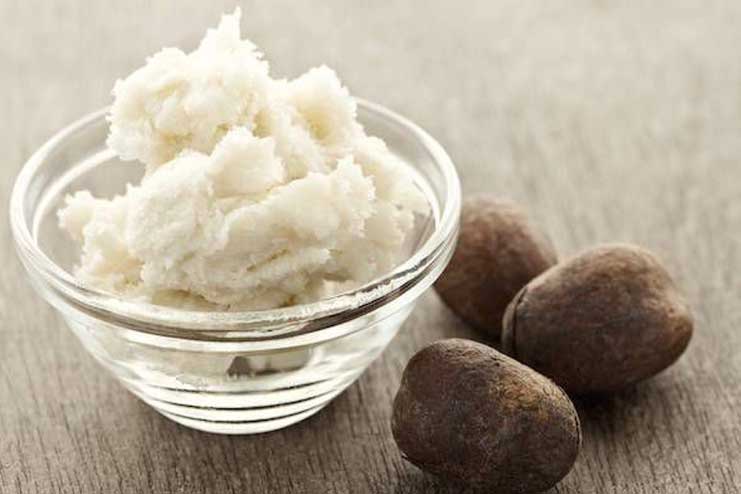
It reduces the skin inflammation. It protects the skin from itchiness and peeling. It is analgesic and helps relieve the pain in the affected area.
Apply a thin layer of fresh organic shea butter on your baby’s cleansed diaper area.
25. Corn Starch:
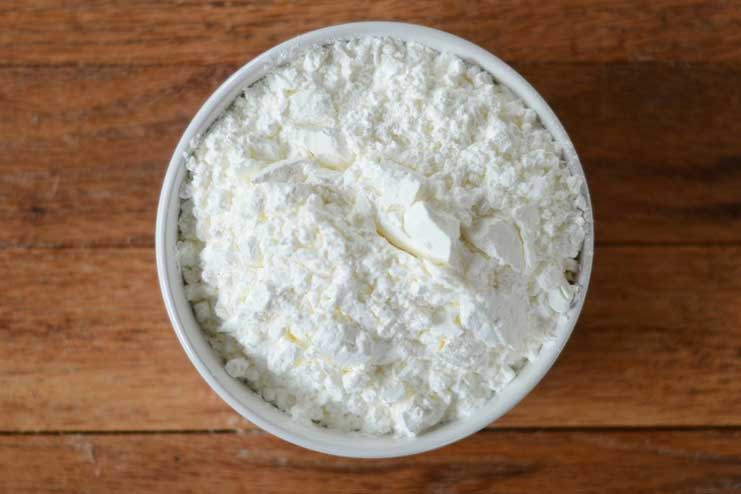
As moisture is the root causes for diaper rash make sure that your baby’s diaper area is dry always.
Cornstarch is a great moisture absorber. Apply cornstarch powder to cleansed baby’s bottom area.
26. Chamomile Tea and Honey:
 It has anti inflammatory, anti fungal, antibacterial,and antiseptic properties. Being hypoallergenic, it helps in reducing the skin irritants.
It has anti inflammatory, anti fungal, antibacterial,and antiseptic properties. Being hypoallergenic, it helps in reducing the skin irritants.
Mix I teaspoon of honey to 2 cups of chamomile tea and fill it in a spray bottle. Spray this mix to the affected area before every diaper change.
Tips and Precautions For Baby Diapering:
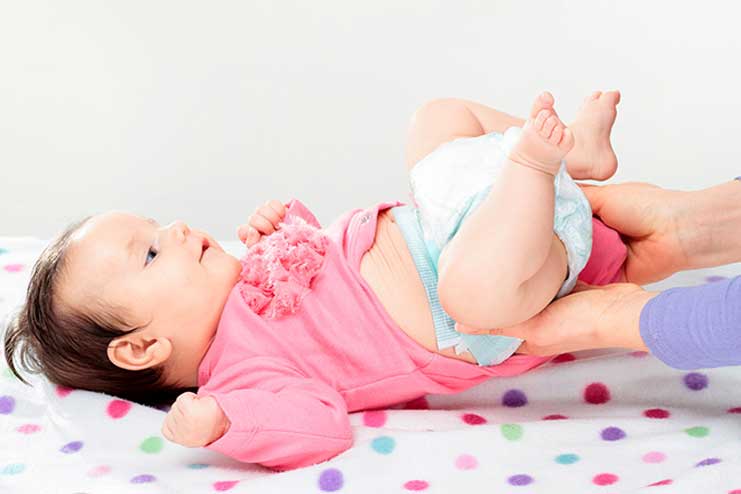
Here are a few tips to treat the baby with diaper rash and prevent further rashes.
- Wash your hands properly before and after every diaper change
- Frequently check your baby’s diaper and change it as soon as it becomes wet.
- Always keep the diaper area dry and clean.
- Use the wipes with mild fragrances. The wipes which gives hard fragrance contain alcohol and causes skin inflammation
- Before putting new diaper ensure that the area is clean, and dry.
- Don’t allow your baby to rub against the diaper
- Never use tight diapers which may increase the friction on the skin.
- Avoid using baby powder
Diaper Change Frequency Chart:
On an average a newborn baby needs 10-14 diapers a day until the umbilical cord falls off. As your baby turns one year old you may require 4-6 diapers a day. Breastfed babies are more likely to soil diapers when compared to formula fed babies. This is because breast milk gets digested very easily resulting in more poops.
Help your baby to get rid of irritant diaper rashes with the help of useful tips and home remedies to avoid diaper rashes in babies.




